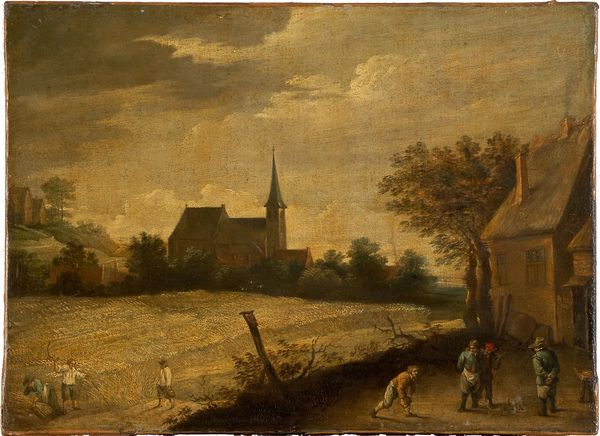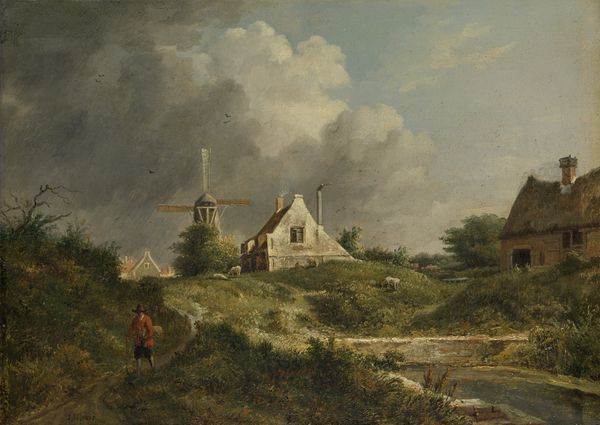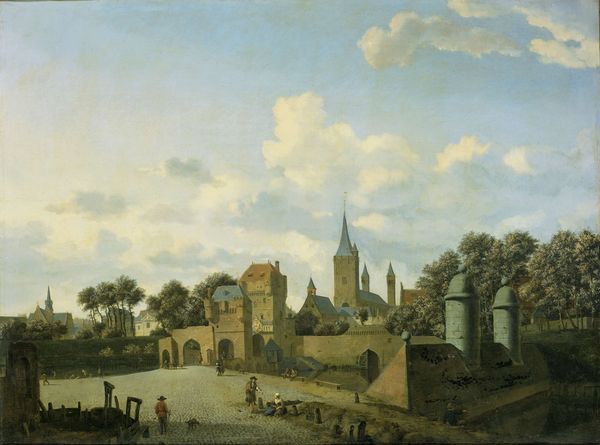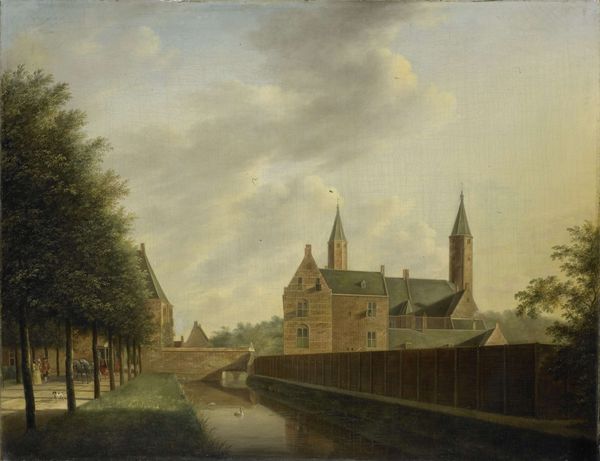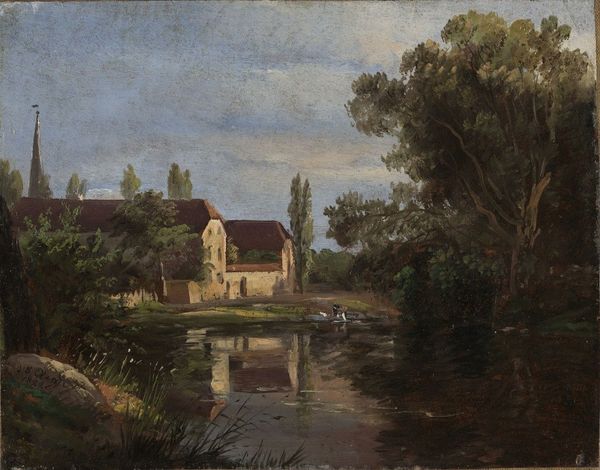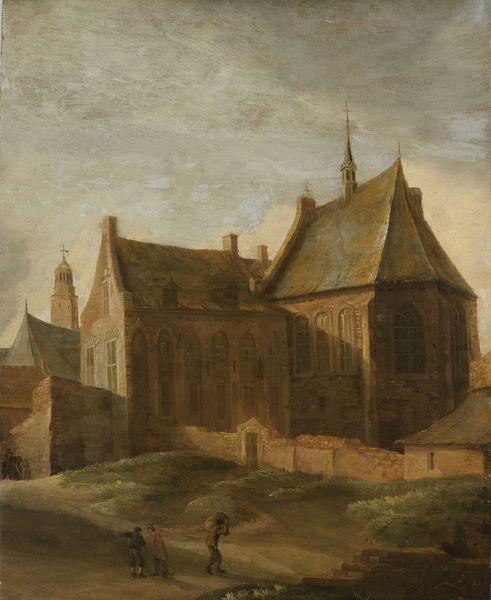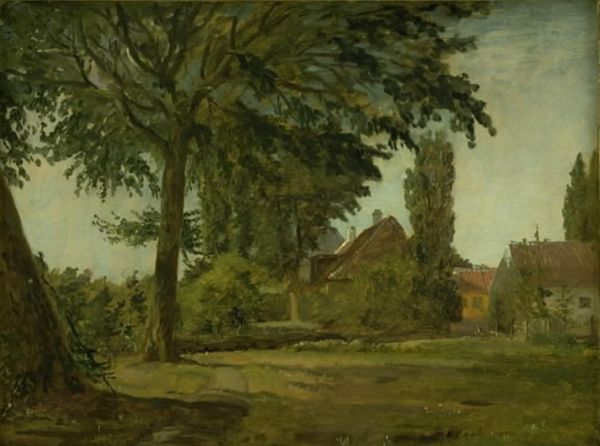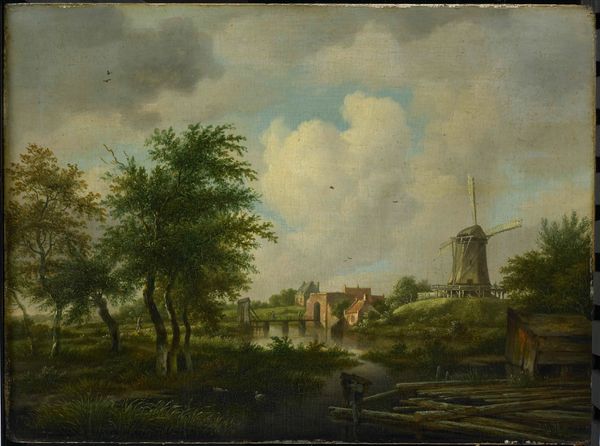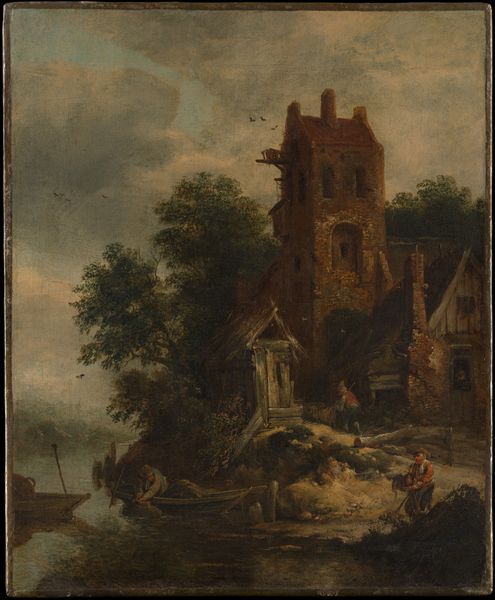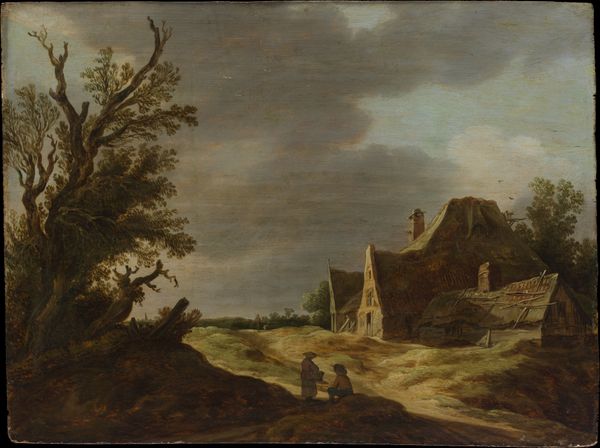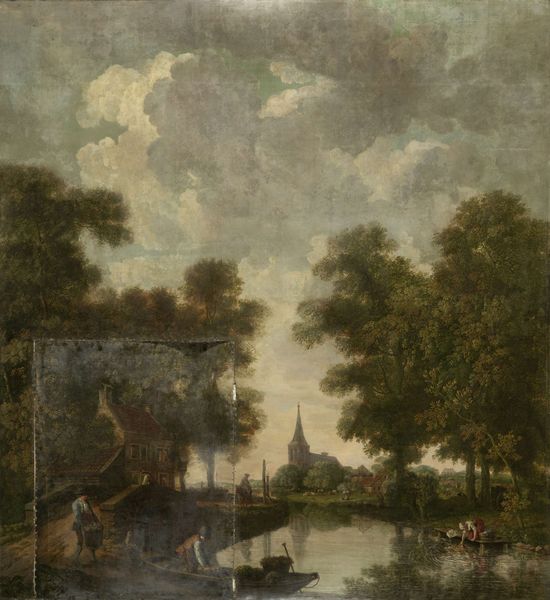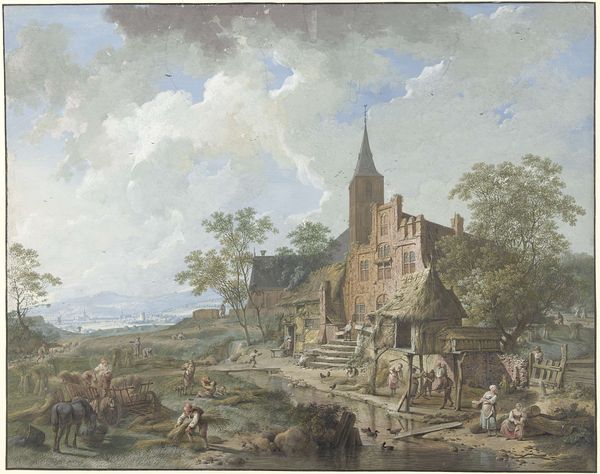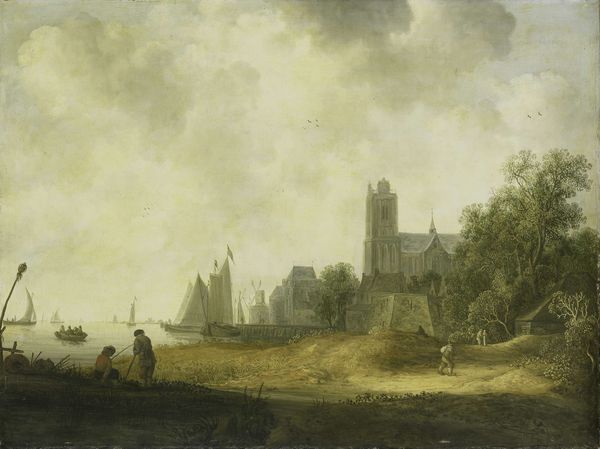
St Knud's Church by the River in Odense. Autumn 1842 - 1845
0:00
0:00
painting, plein-air, oil-paint, wood
#
water colours
#
painting
#
plein-air
#
oil-paint
#
landscape
#
oil painting
#
underpainting
#
romanticism
#
wood
#
cityscape
Dimensions: 25.5 cm (height) x 32 cm (width) (Netto), 37.2 cm (height) x 43.8 cm (width) x 6.8 cm (depth) (Brutto)
Curator: Let's talk about "St Knud's Church by the River in Odense. Autumn," painted by Dankvart Dreyer sometime between 1842 and 1845. It’s an oil on wood panel and a striking example of Danish Golden Age landscape painting. Editor: My first thought is that it feels almost… hushed. The colours are muted, the sky's heavy, even the water seems to be holding its breath. It’s as if the whole scene is waiting for something. What’s your read? Curator: That quietude is definitely there. But it’s not just stillness, it's more like the calm before a storm, and perhaps that’s a good way to read this historical period. I am immediately attracted by the cathedral's architectural symbols; there’s an undeniable feeling of permanence contrasted against the ephemerality of the weather. Editor: True, the cathedral, standing solid as anything and built of stone. It looks like this isn't a lighthearted depiction of Autumn but of Time. There is a silent sense of the passing of all. Tell me, were plein-air painting becoming more popular at the time, to have caused Dreyer to move from a studio? Curator: Absolutely! Plein-air painting was gaining traction as artists sought to capture the nuances of natural light and atmosphere directly, rather than relying solely on studio sketches. In a manner, one can appreciate that the painting of “St Knud's Church” in autumn and plein air became a canvas of emotions and history as Dankvart stood between art, God, and the historical shifts of his epoch! Editor: The way Dreyer renders the figures by the water… they seem almost secondary, blended into the environment. As though human life exists at the grace of both temporal season and temporal institution, perhaps implying we humans are only as relevant as we find our relevance in God’s church and season, to some extent! That building and nature almost dwarfing them, you think? Curator: I do, indeed. It's like the weight of history is tangible. The muted palette, the heavy sky – all contributing to this powerful feeling. And that iconic steeple pierces right through, acting as a mediator between God and his season that we now call “Autumn.” Editor: This is definitely a good painting. One does love those iconographic messages left there for us to reflect on... Thank you. Curator: Thank you, too! It certainly lends itself to this kind of introspective musing.
Comments
No comments
Be the first to comment and join the conversation on the ultimate creative platform.
